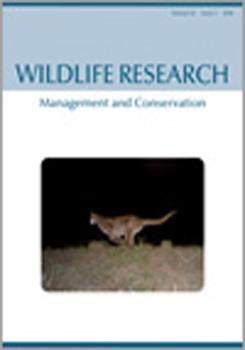Context. Dogs are often used to find rare or cryptic species, but search methods are not standardised, making it difficult to interpret and compare results. Standardised approaches are needed to optimise search effectiveness and/or efficiency. Designing an optimal search strategy requires knowledge of the effective sweep width, which is related to the probability of detection (POD) at various distances between the searcher and the search object.
Aims. Our primary aim was to estimate effective sweep width for wildlife-detector dogs searching for rodents. We also tested whether dogs differed in their reaction on encountering a laboratory rat (Rattus norvegicus) or a wild-caught Norway rat (wild-type R. norvegicus).
Methods. We conducted field trials using trained rodent-detector dogs to locate dead laboratory rats. We used the numbers of detections and non-detections at distances of 0–100 m to estimate detection probability and effective sweep width.
Key results. Dog teams located 100% of rats (regardless of strain) placed directly in their search path. POD declined rapidly with an increasing distance, yielding an observed detection rate of 33% at 10 m, and close to zero at ≥20 m. The data were best described by an exponential decay function. Effective sweep width was estimated to be 16.8 m (95% confidence interval 12.3–21.4 m), corresponding to a strip extending 8.4 m on either side of a walked track. Handlers could not consistently judge whether a dog had encountered a laboratory rat or a wild rat.
Conclusions. Our results suggest that when dogs are >10 m from a source of rat odour, POD declines sharply. We estimate that the effective distance explored when searching for a stationary rodent is 8.4 m either side of the search path.
Implications. This information will allow users to optimise the search pattern that dog teams should follow for a given search scenario.






